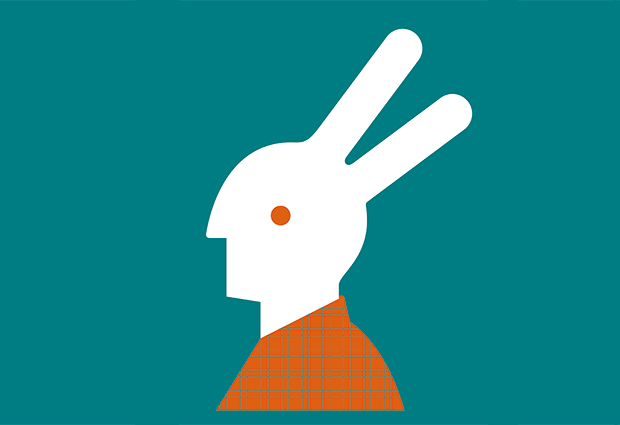
Using humans as a model organism
Biology is incredibly complex. Even the simplest bacteria make intricate decisions and balance different demands, all via chemical reactions happening simultaneously in what seems like just a bag of molecules: the cell. This is the first article in our Human minds series on the social and scientific implications of studying human biology.

By Ewan Birney
Larger organisms all start as a single cell and eventually become living creatures that can fly, or slither, or think – sometimes living for just a day and sometimes for centuries. Evolution has, quite amazingly, given rise to everything from uranium-feeding bacteria to massive sequoias and tax-filing, road-building, finger-painting humans.
Unpicking the complexity of biology is hard, in part because so many things are happening all at once. We’ve been working on it for centuries, building layer upon layer of knowledge collectively, usually relying on specific organisms with which we accumulate large amounts of knowledge on the processes of life. These ‘model’ organisms, for example the gut bacteria E. coli, are selected for their ease of husbandry and other features of their biology. Interestingly, most of them have been our companions or domesticated in some way throughout our explosive growth as a species.
To create models of animal life processes at the simplest level, we use European and African yeast. We also use the humble slime mould, which spends most of its time as a single cell but, in extremis, will band together to form a proto-organism that has given us insights into cell signalling. Taking it up a notch in complexity, we use pests that have lived off our rubbish since our earliest days in Africa: fruit flies, mice and rats provide profound insights into animal life.
Each of these models has its strengths and weaknesses: the time it takes to breed generations, how easy they are to handle, the flexibility (or lack thereof) of their cellular lineage (i.e. in C. elegans, every individual has the same number of cells, with the same functions, created via a precisely defined set of cell divisions), and the availability of tools to observe and manipulate them in the lab. But they all share one distinct quality: they are not human.
Using ourselves?
Using Homo sapiens as a model species is not a new idea – it has been around since the dawn of genetics and molecular biology. Studies of human height motivated the early theory around quantitative genetics. Quite a bit of mammalian (and general eukaryotic) biochemistry and genetics was uncovered by discoveries of inborn errors in human metabolism in the 1960s and 1970s. And robust cancer-derived cell lines – most famously HeLa cells – have been used in molecular biology for decades. Using humans as a model species to understand fundamental life processes has many advantages, and some important drawbacks.
We can’t keep people in a strictly defined environment, nor dictate whom they breed with.
First, the advantages. At a practical level, humans are large, so we can acquire substantial amounts of material for research from consented individuals either from living people (for example, blood) or via autopsy. The human population is also extremely large, easy to access and has no ongoing husbandry costs. As a population, humans are genetically diverse, with only geography really influencing our mate choice on a global level. Many phenotyping systems are designed explicitly for humans, in some cases with a high level of automation. We can culture human cells routinely using iPSC techniques, and these cellular systems can be genetically modified and made into functional tissue-scale organoids.
Now for the drawbacks. There are no inbred lines for Homo sapiens, making it difficult to disentangle genetics from other factors. The large size and tissue complexity of this species, in particular the brain, presents significant challenges to understanding cellular and tissue behaviour. We can’t keep people in a strictly defined environment, nor dictate whom they breed with. We can’t make genetically modified humans, intervention studies are limited by both safety and expense, and ethical issues, which are important when studying any species, are more involved for humans – even for basic research.
Human disease
But the downsides to using humans as a model species are far fewer in number now than they were two decades ago, when the human genome was considered to be so large that a major, global consortium was required to generate it. The human genome is dwarfed in size and complexity by domesticated wheat and pine, the genomes of which are being untangled today. The cost of human genetics studies has plummeted so that large populations can now be studied (a genotyping array now costs under €50 and sequencing under €2000).
A considerable amount of money is already spent on clinical research, but the advent of inexpensive techniques to measure DNA, RNA, proteins and metabolites presents massive, new opportunities. It is now possible to blend scientific approaches that have traditionally been separate – experimental medicine and genomics, or epidemiology and bioinformatics – to exploit these measurement techniques alongside traditional clinical approaches.
Traditional models, rebooted
There is justifiable excitement around new opportunities to study humans as a model organism, but it is simply not the case that the established model organisms will become less and less relevant.
Placing too strong an emphasis on human studies could lead to inadvertently hindering research on other organisms, which would be counterproductive. Instead, we should leverage the unique properties of each model organism. For example, one remarkable paper demonstrates how a worm ‘thinks’ in real time, monitoring the individual firing of each specific neuron in the animal as different cues are passed over its nose. That’s not an experiment that’s remotely feasible in humans.
All human studies are not necessarily translational.
We would be very foolish to take a laser-like focus on this rather eccentric bipedal primate, however obsessed we might be with keeping it healthy, happy and long-lived. Clinical researchers might have a harder time managing this, as the necessary focus on humans to understand human disease makes it all too easy to dismiss the future impact of other organisms on understanding human biology. But the majority of the molecular knowledge they currently deploy in their research is built on studies of a very diverse set of organisms. After all, useful and surprising insights and technologies can be gleaned from any organism.
Basic researchers, on the other hand, might dismiss the advent of human biology because it places inappropriate emphasis on applied research into the specifics of human disease. But all human studies are not necessarily translational, and in any case the interweaving between understanding biology and understanding disease makes it impossible to really separate these two concerns.
To human and back again
Over the next decade, the integration of molecular measurements with healthcare will deepen. This will almost certainly have a beneficial impact on the lives and health of many people worldwide. It also provides huge opportunities for the research community – obviously for applied research but also for curiosity-driven enquiry, as this massive part of our economies generates and manages information on ourselves. We should exploit this to its fullest so that we can understand life, on every scale, in every part of the world we inhabit.


